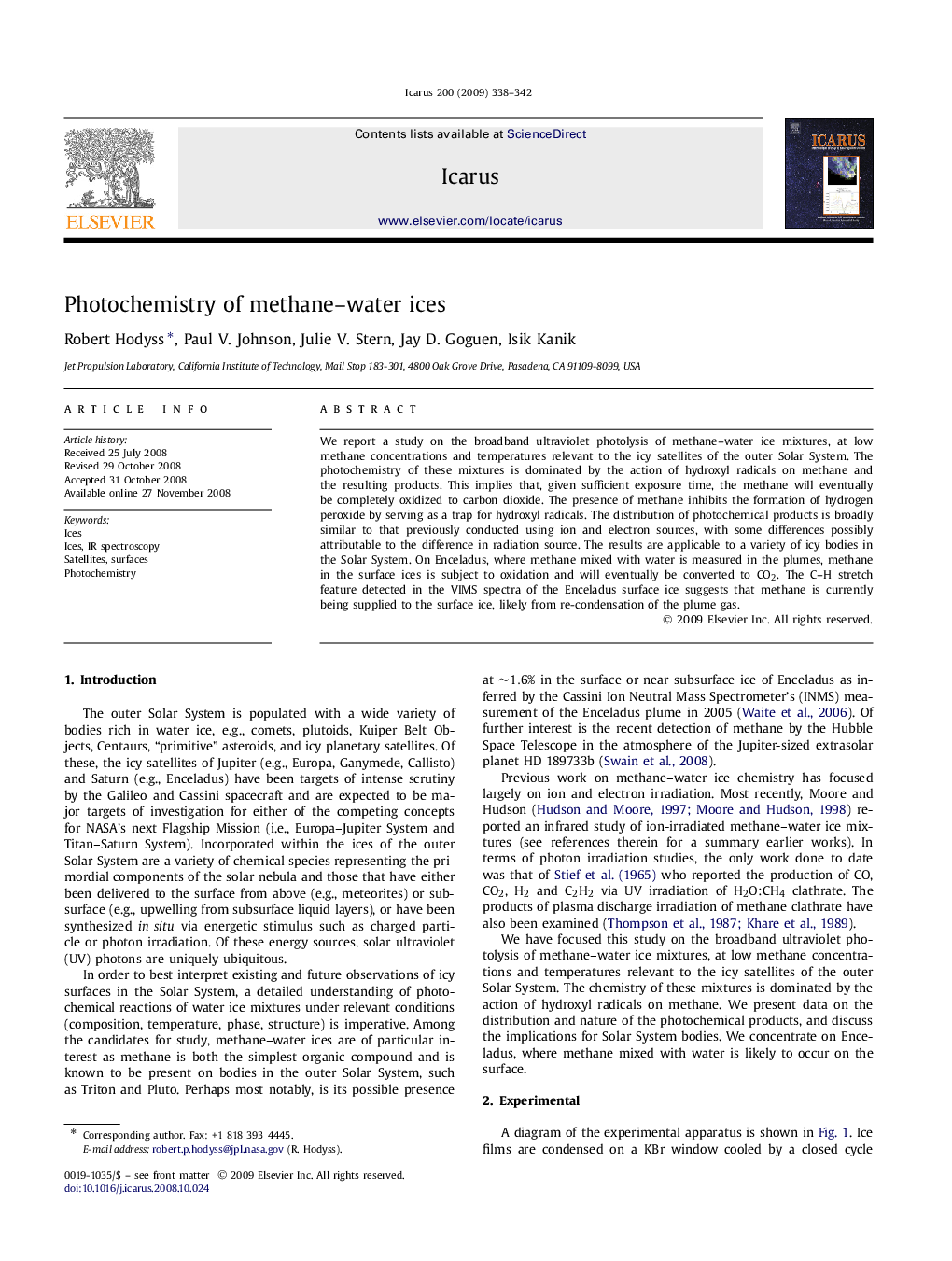| Article ID | Journal | Published Year | Pages | File Type |
|---|---|---|---|---|
| 1774827 | Icarus | 2009 | 5 Pages |
We report a study on the broadband ultraviolet photolysis of methane–water ice mixtures, at low methane concentrations and temperatures relevant to the icy satellites of the outer Solar System. The photochemistry of these mixtures is dominated by the action of hydroxyl radicals on methane and the resulting products. This implies that, given sufficient exposure time, the methane will eventually be completely oxidized to carbon dioxide. The presence of methane inhibits the formation of hydrogen peroxide by serving as a trap for hydroxyl radicals. The distribution of photochemical products is broadly similar to that previously conducted using ion and electron sources, with some differences possibly attributable to the difference in radiation source. The results are applicable to a variety of icy bodies in the Solar System. On Enceladus, where methane mixed with water is measured in the plumes, methane in the surface ices is subject to oxidation and will eventually be converted to CO2. The CH stretch feature detected in the VIMS spectra of the Enceladus surface ice suggests that methane is currently being supplied to the surface ice, likely from re-condensation of the plume gas.
